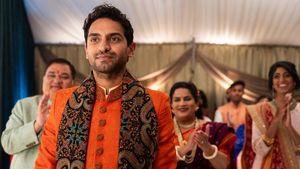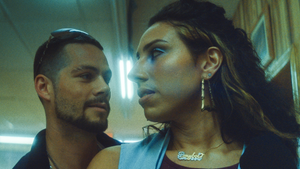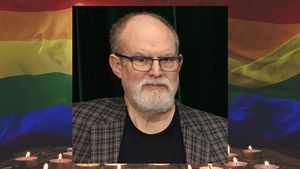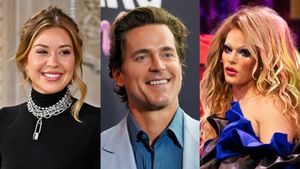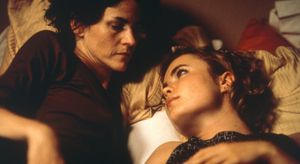Children's and young adult television evolves more and more with each season. Long gone are the day of The Jetsons, The Flintstones, and The Smurfs. There is a new age of children’s TV that is defying and testing the limits of what the typical American household will allow. More and more nonbinary and LGBT characters are being introduced.
Granted, this isn’t a totally new thing. Older millennials can look back to their favorite childhood series and see LGBT themes and characters sprinkled throughout their favorite shows. Who can forget Him, the cross-dressing man (or was she a woman) and fabulous villain from the legendary series The Powerpuff Girls?
![]()
Or even Mr. Simmons from Hey Arnold?
![]()
Older generations can even look at characters such as Bugs Bunny, who frequently appeared in drag and tested the boundaries of masculinity (how masculine can a bunny be, anyway?).
![]()
![]()
But these themes and characters are present now more than ever. Popular shows like Avatar: The Legend of Korra, Steven Universe, The Loud House, and the preschool series Julie’s Greenroom (just to name a few) have all depicted LGBT and/or nonbinary characters in a primary or supporting roles.
As expected, with change and inclusion comes backlash, but here are six reasons to love LGBT characters in children’s TV.
1. Representation matters.
The Loud House, created by Chris Savino for the popular children’s network Nickelodeon, recently introduced a same-sex couple as the parents of one of the show's supporting characters, Clyde McBride. Mr. and Mr. McBride (voiced by Michael McDonald and Wayne Brady) represent the growing demographic of same-sex couples who raise children together. A recent study by the Williams Institute at UCLA revealed that nearly 6 million adults and children have an LGBT parent. There are more than 125,000 same-sex couple households with nearly 220,000 children under the age 18. These children go to school and are active members of their communities. Their identities and home life deserve to be portrayed and represented just as much as anyone else's.
![]()
2. LGBT characters can help kids build a frame of reference.
For some children and young adults, interactions with nonbinary people and other members of the LGBT community can be limited. Seeing these characters live out their lives, if even just on-screen, can build a sense of relatability that some don’t have the opportunity to establish in their day-to-day lives. Seeing these characters live and not be defined by their sexual or gender identity but instead face whatever problems a 30- to 60-minute episode can handle can potentially dismantle stereotypes and give viewers a different perspective on the lives of others.
![]()
3. The more LGBT characters there are in children's TV shows, the more opportunities there will be to teach tolerance and acceptance.
America is one of the most diverse places on earth, but in some communities there are still underrepresented groups. Including LGBT characters in children’s TV can teach acceptance and tolerance. These shows have the golden opportunity to create realistic interpretations of LGBT people and create a more complete picture of them, opposed to a superficial stereotype. So when children and young adults do encounter someone who is unlike them, they aren’t immediately closed off to the opportunity to get to know them and won’t have the knee-jerk reaction of writing them off—simply because their favorite show has someone who resembles them.
[iframe https://giphy.com/embed/d4iWS8EN1ldza allowfullscreen="" class=^{{"giphy-embed"}}^ frameborder="0" height="251" width="480"]
4. These characters can act as a lifeline.
Being a child can be tough, especially when one can’t identify with anyone around them. There are children and young adults alike who identify as LGBT or have parents who do so. Having content that mirrors their lives can, in fact, save their own. It isn’t always easy for children to articulate what’s wrong or what they need. So it can be a tremendous help to see their favorite character in their same predicament live out their life and truth.
![]()
5. Conversations will start.
Sometimes having necessary talks with children about gender and sexual identity can be hard. These shows can be a jumping-off point for these conversations. It can be much easier to have these talks when children and young adults have a frame of reference.
6. Television should mirror real life.
Ultimately, what viewers like the most about their favorite television shows is that they can identify with storylines, characters, and circumstances. Viewers should be able to look at the screen and see reflections of people they know or even themselves. LGBT people make up a large portion of the U.S. population and should not be excluded. And exclusion doesn’t threaten just one race or group of people — it is a threat to all races and all people. Who’s to say who’s next after wiping LGBT people from the narrative? All people from all walks of life should be represented. We cannot pick and choose the people with whom we share space in our workplaces, neighborhoods, and communities, so why should the option be available when it comes to TV?
[iframe https://giphy.com/embed/wnL7R5Hmyzlpm allowfullscreen="" class=^{{"giphy-embed"}}^ frameborder="0" height="270" width="480"]





















































